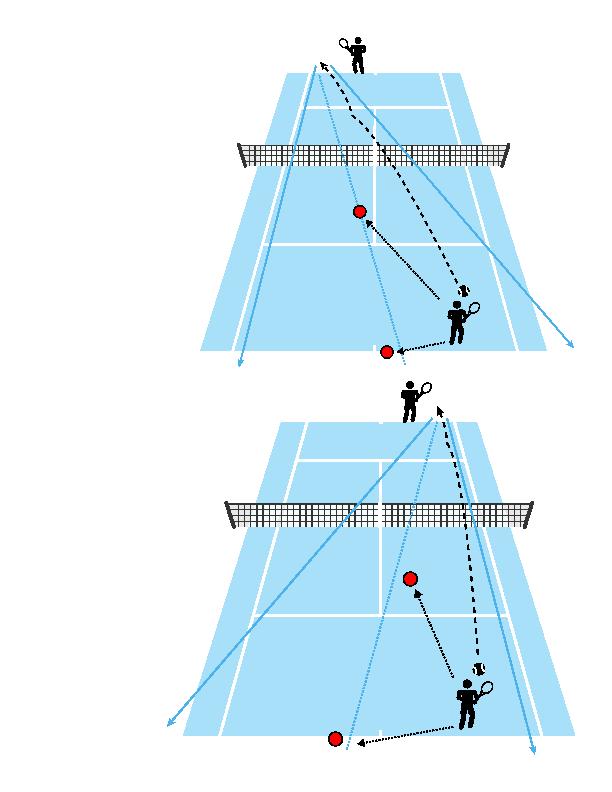
deal of side-to-side movement.
line is the home if the player decided to
approach the net. Notice how he would
have to move diagonally forward to reach
this home.
near-end player has stepped into the court to hit a
crosscourt shot, shown as a wide black dotted
line. The two blue solid lines represent the best
possible angles that the opponent in the far court
could possibly hit. The blue dotted line marks the
middle of these two angles, which is therefore the
theoretical optimal recovery location. The thin
black dotted line shows the direction of the
player's recovery and the red dot at the baseline
is the home for this particular shot. I've placed the
home slightly to the left of the middle of the two
angles, to take into account most players' desire
to use their forehand groundstroke as often as
possible. A left-handed player's home would be
slightly to the right of the middle.
decides to hit down the line. To recover to the correct baseline
home, s/he needs to move farther to the left than if s/he'd hit
crosscourt. Shorter recovery is one of the reasons why cross-
court is the more common shot choice when playing from the
baseline in singles.
the-line approach shot, the recovery distance is
more directly forward, so recovery is shorter than
with a crosscourt approach. This visually demon-
strates the common singles tactic, that down the
line is usually a better choice for an approach shot,
as it's less distance to reach the correct home.